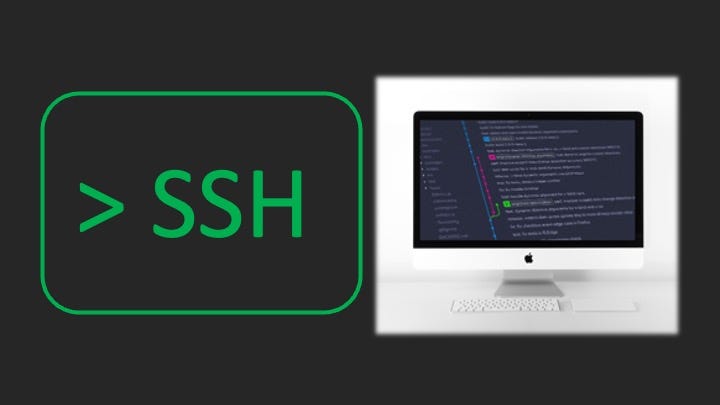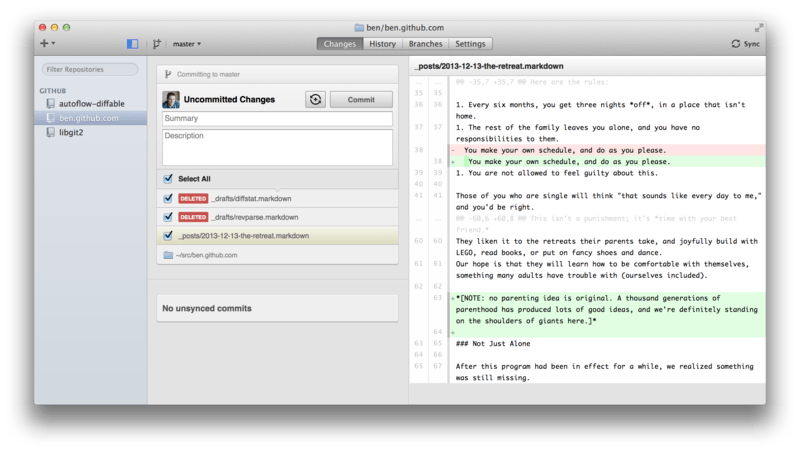
- #How to setup git on mac how to
- #How to setup git on mac for mac
- #How to setup git on mac install
- #How to setup git on mac password
- #How to setup git on mac download
Then give your key a recognizable title and paste in your public ( id_rsa.pub) key:įinally, test your authentication with: ssh -T you've followed all of these steps correctly, you should see this message: Hi your_user_name! You've successfully authenticated, but GitHub does not provide shell access. Go to your GitHub settings page and click the "New SSH key" button: Step 2: Now, customize the shortcut to your liking and also record a phrase to activate the shortcut with a voice command. I’m going to pick the Photo Grid shortcut. Or for Windows, simply run: clip < ~/.ssh/id_rsa.pub # Windows Add your public SSH key to GitHub Step 1: Open the Shortcuts app on your Mac and navigate to the shortcut that you want to use. Next, you need to copy your public SSH key to the clipboard.įor Linux or Mac, print the contents of your public key to the console with: cat ~/.ssh/id_rsa.pub # Linux Then, add your private key to ssh-agent with: ssh-add ~/.ssh/id_rsa Copy your public SSH key
#How to setup git on mac for mac
For it to work properly, it needs to be running and have a copy of your private key.įirst, make sure that ssh-agent is running with: eval "$(ssh-agent -s)" # for Mac and Linux Ssh-agent is a program that starts when you log in and stores your private keys. You can read more about how SSH / RSA key pairs work here. It's extremely important that you never reveal your private key, and only use your public key for things like GitHub authentication.
#How to setup git on mac how to
Once your environment is set up, be sure to read Tutorial: Contribute Code to YUI to learn how to clone YUI source code to your local development environment, and submit a CLA to contribute to YUI. Note: SSH keys are always generated as a pair of public ( id_rsa.pub) and private ( id_rsa) keys. This tutorial walks you through how to set up Git on various platforms so you can be reading and writing YUI code in no time. Then generate a new set of keys with: ssh-keygen -t rsa -b 4096 -C check that your keys exist with the ls -al ~/.ssh command and ensure that the output is similar to the one listed above. If you don't see any output or that directory doesn't exist (you get a No such file or directory message), then run: mkdir $HOME/.ssh If your keys already exist, skip ahead to the Copy your public SSH key section below. rw- 1 user_name user_name 12892 Feb 5 18:39 known_hosts

rw-r-r- 1 user_name user_name 414 id_rsa.pub
#How to setup git on mac download
Launch your preferred browser and download the installer.
#How to setup git on mac install
Follow the steps below to download and install the package. There’s a standalone Git installer available for macOS that’s been developed by Tim Harper. This is the easiest way to install Git on your Mac. If you've already generated SSH keys, you should see output similar to this: -rw- 1 user_name user_name 1766 id_rsa 1) Use standalone Git installer for macOS. Open a terminal and enter the following command: ls -al ~/.ssh Check for an existing SSH keyįirst, check if you've already generated SSH keys for your machine. Here's a quick guide to generate and configure an SSH key with GitHub so you never have to authenticate the old fashioned way again.
#How to setup git on mac password
Just think–all of that time you spent entering your email address and password into the console every time you push a commit could have been spent coding. If you use GitHub without setting up an SSH key, you're really missing out. To install Git, we recommend websites such as Git Downloads. We recommend using a recent version of Git. Git version 2.28 supports configuring the branch name for initial commits. CodeCommit supports Git versions 1.7.9 and later. To work with files, commits, and other information in CodeCommit repositories, you must install For more information about the AWS CLI and profiles, see Named Profiles.

For more information about IAM, access keys, and secretĭo I Get Credentials? and Managing Access Keys for IAM If theįor more information about CodeCommit managed policies and sharing access to repositories with other groups and users, see Share a repositoryĪnd Authentication and access control forįor more information about CodeCommit and AWS Region, see Regions and Git connection endpoints. Review to review the list of policies to attach to the IAM user. For more information, see AWS managed policies forĪfter you have selected the policy you want to attach, choose Next: In Grant permissions, choose Attach existing policiesįrom the list of policies, select AWSCodeCommitPowerUser or another

On the Permissions tab, choose Add Permissions. In the IAM console, in the navigation pane, choose Users, and then choose the IAM user you want to configure for CodeCommit access. Sign in to the AWS Management Console and open the IAM console at. For more information, see AWS KMS and encryption. If you are using an existing IAM user, make sure there are no policies attached to the user that expressly deny the AWS KMS actions requiredīy CodeCommit. CodeCommit requires AWS Key Management Service.


 0 kommentar(er)
0 kommentar(er)
